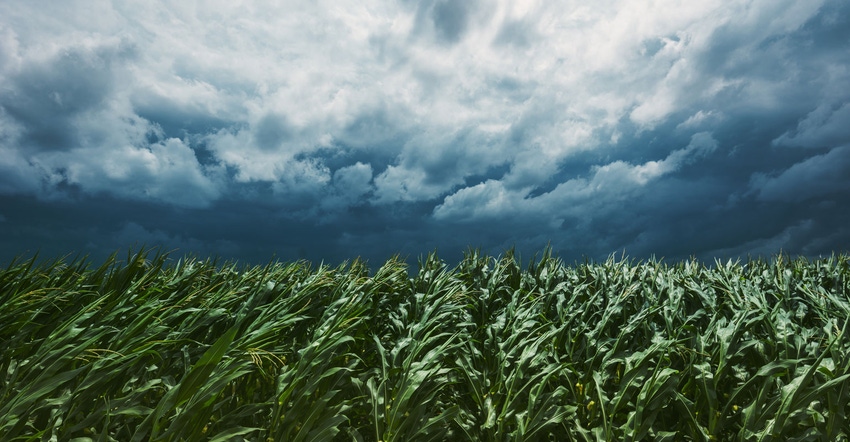April 20, 2022

The amount of weather data available both publicly and privately is abundant, and one firm is working to make sense of it all to benefit agriculture. ClimateAi is a startup that’s using artificial intelligence to maximize weather information in new ways.
“We are on a mission to climate-proof half a billion acres around the world,” says Himanshu Gupta, founder and CEO at ClimateAi. “What we do is forecast the risk of extreme weather going beyond two weeks.”
He explains that the severe weather could be a flood, heat wave or wildfire, and the platform shows how that might impact a particular farm or area. “When we do that, we can generate agronomic analysis and actionable insights that farmers or the community in that food and agriculture value chain can take,” he explains.
Not directly for farmers
The ClimateAi tech is not available directly to farmers. Gupta explains that the firm markets services to food companies and input suppliers to agriculture, which means farmers might have access but not directly from ClimateAi.
For example, ClimateAi in Australia provided the platform for the new tool SKIP, which was developed with Advanta, a division of UPL, and a local cooperative to provide farmers a tool they can use to determine crop mix, planting timing and other features.
“We work with food processors or input players who, in turn, are deploying our platform with farmers,” he notes.
Gupta takes a larger, holistic look at agriculture and how this tool can be deployed. The key is understanding how climate change could impact what you grow, and he knows that those changes will be more severe in some regions than others. He notes climate change is already evident for growers in Alabama, for instance, but less so for those farther north.
“The unique thing about the technology is that it answers three questions: what, where and when for the farmer,” he notes.
The “what” is what to plant, and when to have seed ready. But with this platform, the farmer can look further ahead. “What should I plant for the next season? Is next season going to be harder than normal? Better than normal?” Gupta asks.
Based on this longer-term outlook, the user can tailor seed choices to match specific weather outcomes. This information can help a farmer decide between planting crop X or crop Y on a specific field.
“The second question is ‘When?’” within the season, he notes. “When is the right time to plant? When is the right time to apply fertilizers and pesticides? And when is the right harvesttime?”
The “where” of this decision tree is about knowing locations where problems will appear. “I might find I’m not going to be able to grow canola in this farm. But where can I grow canola?” he says. On larger farms, this information has value in determining the field choice for a specific crop based on weather information from ClimateAi.
Beyond 2 weeks
When talking about these decisions, ClimateAi is looking beyond the traditional two-week window. This is a system that can look at weather three months, six months and even 10 years out. “And 10 years is where the climate time frame starts and where basically you’re dealing with a probabilistic outcome,” Gupta says.
For example, what is the probability over the next month that you’ll have two weeks of clear weather to plant? That would be based on heat risk, soil moisture risk and other factors. Gupta says that while attending Stanford University, he used his background in climate science, combined with the computer science background of his co-founder Max Evans, to make a breakthrough in forecasting extreme weather risk more than two weeks out.
“We are not claiming we have a crystal ball,” Gupta is quick to add. “Farmers, seed companies and food processors, and their agronomists, are used to making bets based on what is going to happen next season based solely on historical averages.”
With ClimateAi and its use of artificial insights, it gets close to that crystal ball. “What we are saying is that if you were to use our insights versus using historical average, you’ll see an increase in profits and the increase in other outcomes including yield, quality or food safety,” he says.
The safety angle comes in when crops are grown or stored in ways that boost opportunity for development of issues like aflatoxin or salmonella. The system can help avoid that.
Farmers may hear about these new advanced weather tools from suppliers in the future. Knowing what’s possible offers some insight into how best to deploy these tools. Learn more at climate.ai.
About the Author(s)
You May Also Like






